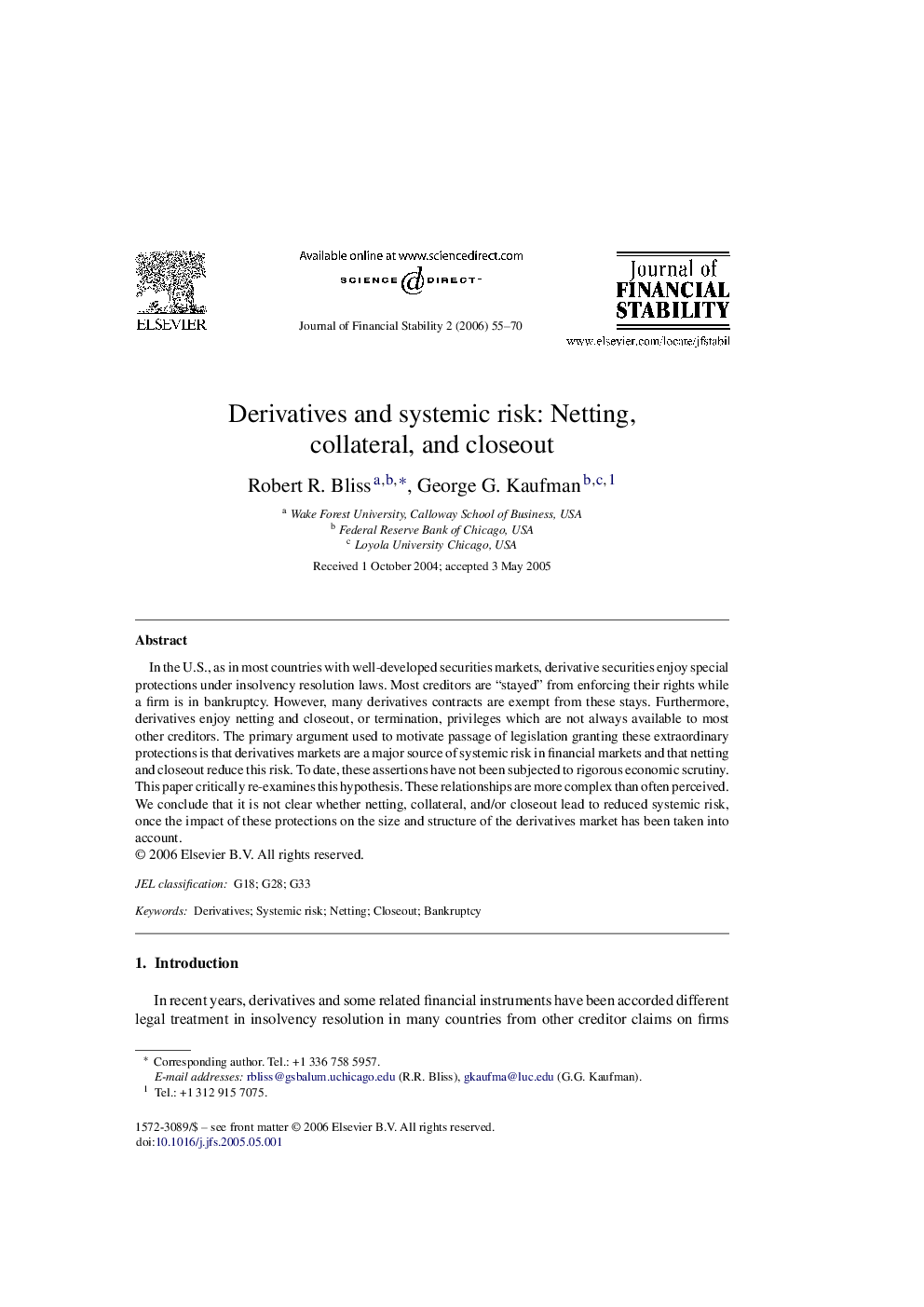| Article ID | Journal | Published Year | Pages | File Type |
|---|---|---|---|---|
| 999343 | Journal of Financial Stability | 2006 | 16 Pages |
In the U.S., as in most countries with well-developed securities markets, derivative securities enjoy special protections under insolvency resolution laws. Most creditors are “stayed” from enforcing their rights while a firm is in bankruptcy. However, many derivatives contracts are exempt from these stays. Furthermore, derivatives enjoy netting and closeout, or termination, privileges which are not always available to most other creditors. The primary argument used to motivate passage of legislation granting these extraordinary protections is that derivatives markets are a major source of systemic risk in financial markets and that netting and closeout reduce this risk. To date, these assertions have not been subjected to rigorous economic scrutiny. This paper critically re-examines this hypothesis. These relationships are more complex than often perceived. We conclude that it is not clear whether netting, collateral, and/or closeout lead to reduced systemic risk, once the impact of these protections on the size and structure of the derivatives market has been taken into account.
